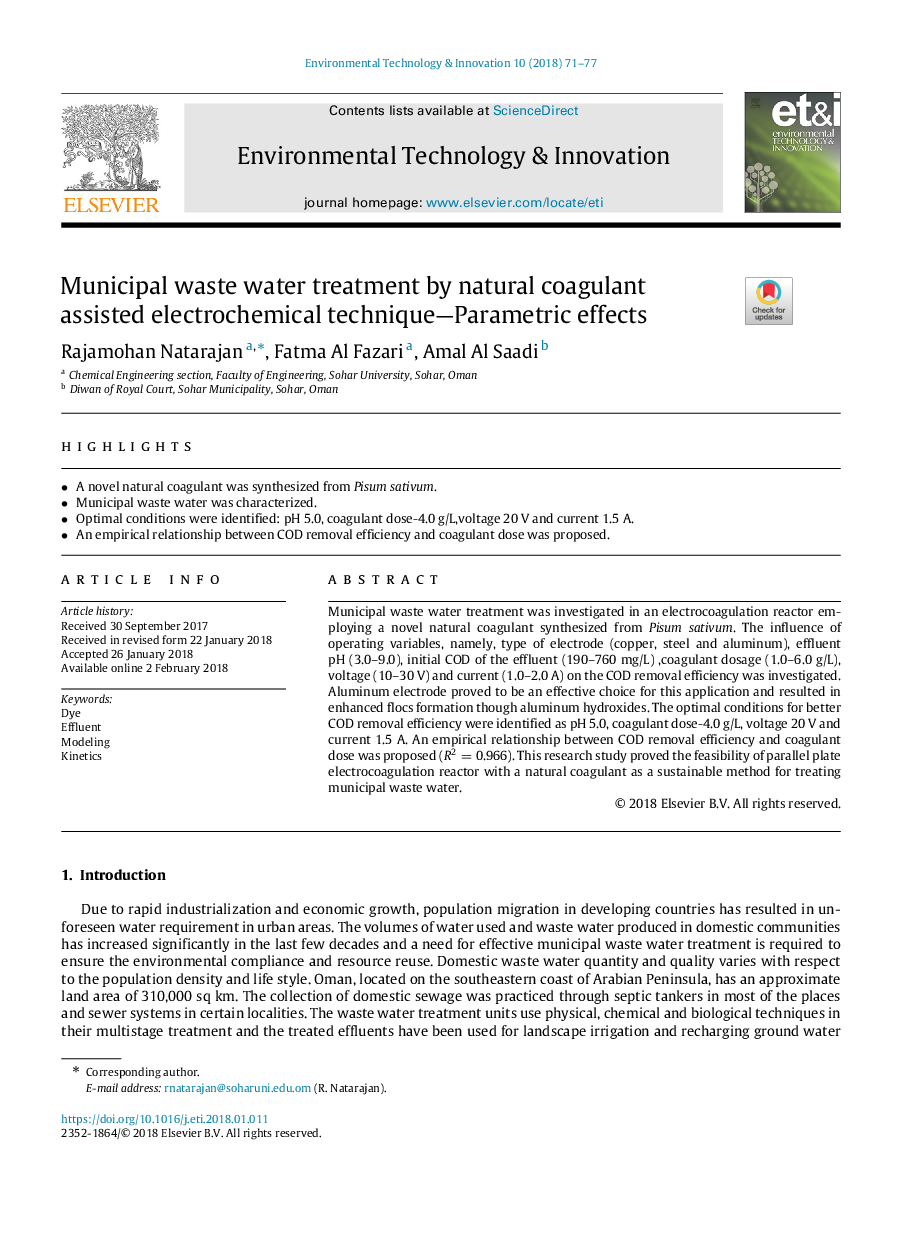| Article ID | Journal | Published Year | Pages | File Type |
|---|---|---|---|---|
| 8857962 | Environmental Technology & Innovation | 2018 | 7 Pages |
Abstract
Municipal waste water treatment was investigated in an electrocoagulation reactor employing a novel natural coagulant synthesized from Pisum sativum. The influence of operating variables, namely, type of electrode (copper, steel and aluminum), effluent pH (3.0-9.0), initial COD of the effluent (190-760 mg/L) ,coagulant dosage (1.0-6.0 g/L), voltage (10-30 V) and current (1.0-2.0 A) on the COD removal efficiency was investigated. Aluminum electrode proved to be an effective choice for this application and resulted in enhanced flocs formation though aluminum hydroxides. The optimal conditions for better COD removal efficiency were identified as pH 5.0, coagulant dose-4.0 g/L, voltage 20 V and current 1.5 A. An empirical relationship between COD removal efficiency and coagulant dose was proposed (R2=0.966). This research study proved the feasibility of parallel plate electrocoagulation reactor with a natural coagulant as a sustainable method for treating municipal waste water.
Related Topics
Life Sciences
Environmental Science
Environmental Chemistry
Authors
Rajamohan Natarajan, Fatma Al Fazari, Amal Al Saadi,
